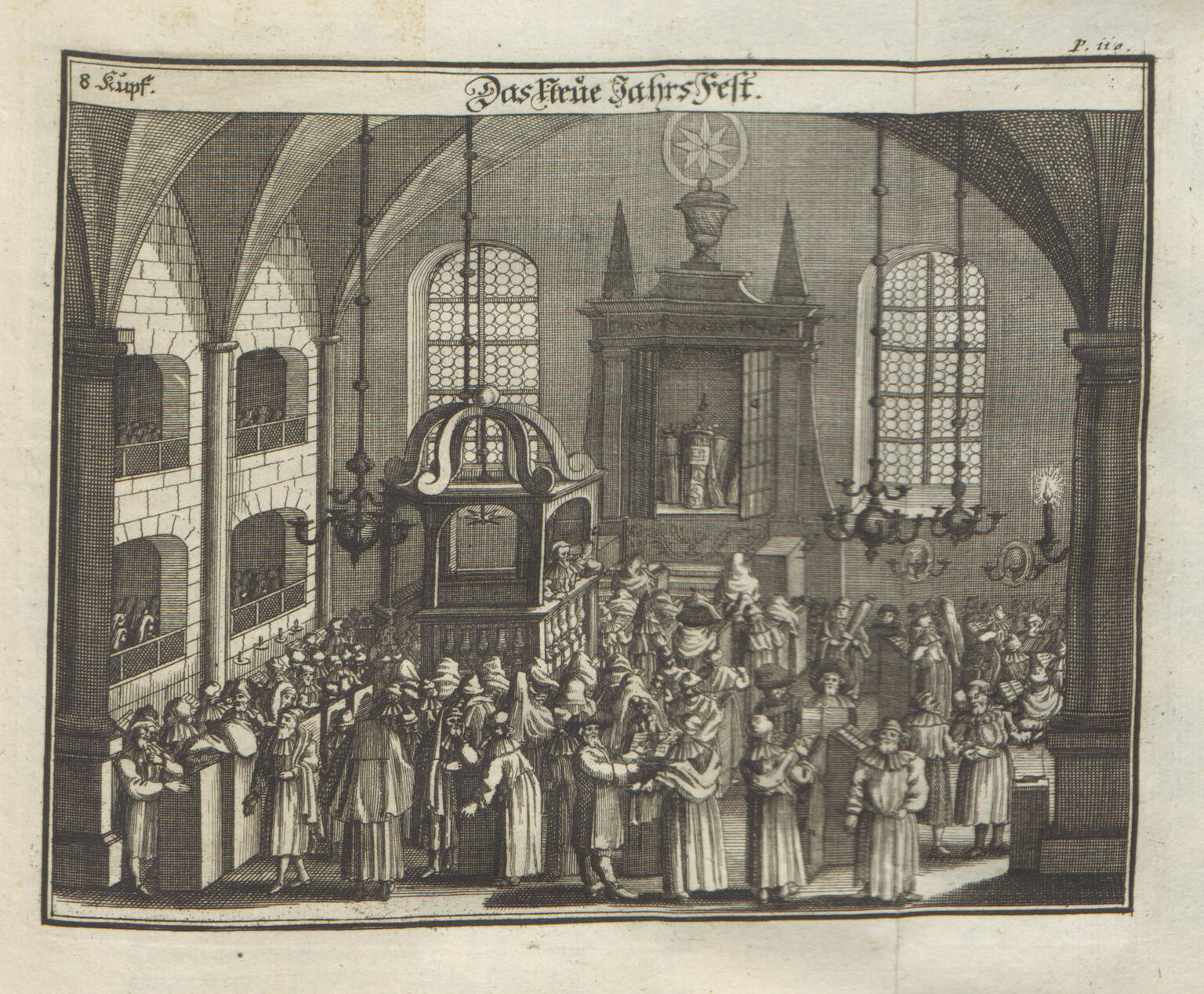Synagogue Service for the New Year
Paul Christian Kirchner
Johann Georg Puschner
Sebastian Jugendres
1724
This illustration depicting Rosh Hashanah services in a synagogue appeared in the book Jüdisches Ceremoniel (Jewish Ceremonial Customs), by Paul Christian Kirchner, a Jewish convert to Christianity. The first edition of his book, published in Erfurt, Germany, in 1717, had no illustrations and was critical of Judaism. In 1724, a new edition of the book was published in Nuremberg, Germany. It was edited by Christian Hebraist Sebastian Jugendres, who softened Kirchner’s criticism of Judaism. It included twenty-eight copperplate engravings, which were made in the workshop of Johann Georg Puschner and his son, also named Johann Georg.
Credits
Published in: The Posen Library of Jewish Culture and Civilization, vol. 5.
You may also like
Noheg ka-tson Yosef (He Leads Joseph Like a Flock): On Rosh Hashanah
I shall recount the love of God: For the Penitential Prayer Service
Responsum: On Arranging for an Eruv
Prayer for King Charles VI
Ḥemdat yamim (Choicest of Days): On Rosh Ḥodesh
Ḥemdat yamim (Choicest of Days): On the 15th of Shevat
Creator Bio
Paul Christian Kirchner
Paul Christian Kirchner converted to Christianity in 1709. He is the author of Jüdisches Ceremoniel (Jewish Ceremonial Customs), published in Erfurt, Germany, in 1717, which took a critical stance on Judaism but which was later republished by Sebastian Jugendres with more neutral text.
Creator Bio
Johann Georg Puschner
Johann Georg Puschner was a printmaker who was active in Nuremberg, Germany. The son of a blacksmith, he was also an astronomer. He is best known for his copperplate engravings of the town and university of Altdorf and for landscapes of Nuremberg. He maintained a workshop with his son, who was also named Johann Georg, so it is not always possible to determine which one was the artist of a particular work.
Creator Bio
Sebastian Jugendres
Sebastian Jugendres was a Christian Hebraist, historian, and scholar of heraldry in Nuremberg, Germany. He is known for his reworking of Jüdisches Ceremoniel (Jewish Ceremonial Customs), originally published as an antisemitic tract in Erfurt, Germany, in 1717, into a second edition with a more neutral tone and copious illustrations.
Related Guide
Early Modern Rabbis and Intellectuals on the Move
Carrying books and knowledge, itinerant rabbis and scholars traveled between communities, facilitating cultural exchange.
Related Guide
Early Modern Religious Practices
Early modern Jews both preserved tradition and innovated. Documents and legal texts reveal rich details about synagogue life, marriage, family relations, and death rituals.



